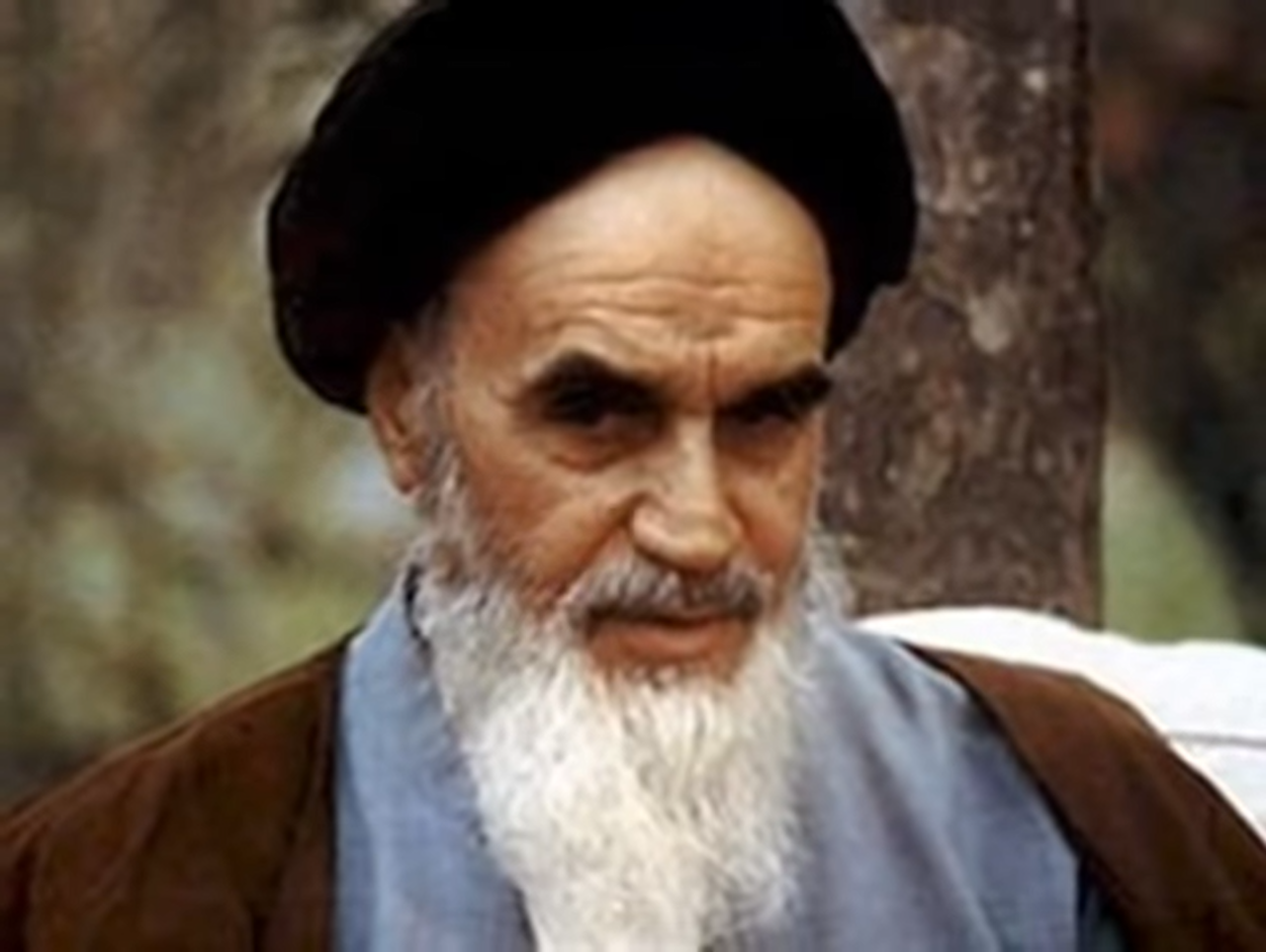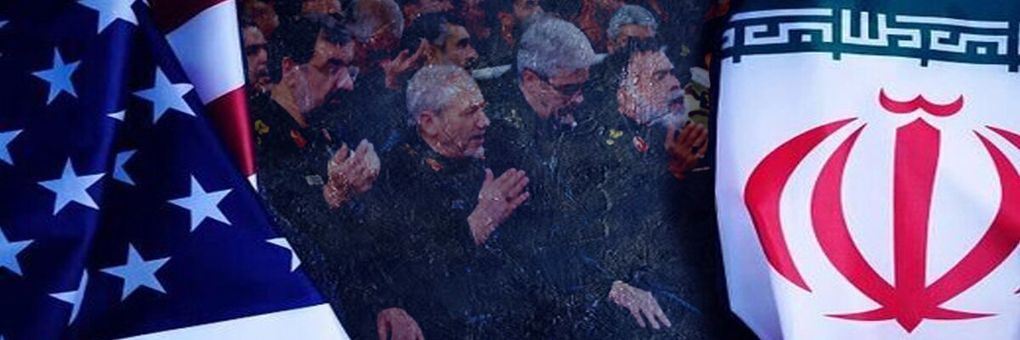[Editor’s Note: This article was originally published in October 2019. It has been updated to reference recent events.]
With the apparent collapse of the Iran Nuclear Deal, that country appears to be returning to its nuclear weapons development program. Under duress from ever-tightening sanctions, Iran’s relationships with its neighbors and the U.S. have turned increasingly volatile. It seems that every day there is news of provocations – both rhetorical and military – that threaten to spiral out of control. Just this week, an Iranian-supported militia attempted to storm the American Embassy in Baghdad, Iraq; and, on January 2, the U.S. launched a drone attack on Iranian military and Iraqi militia leaders, killing Iran's Quds Force Commander Qassem Soleimani and others. This action is likely to lead to retaliation – and perhaps escalation. How did the situation turn into a crisis, and can solutions be found that don’t include a regional war that escalates into World War III?
.jpg)
Iran’s Major General Qassem Soleimani (Source: Erfan Kouchari from the Tasnim News Agency, via Wikimedia Creative Commons)
Some headlines you just don’t want to see, especially when it comes to the possibility of a nuclear World War III. For example, who wants to read this one: Iran Announces Successful Nuclear Bomb Test. The next one might be U.S. and Saudis Strike Iran’s Nuclear Facilities. Followed by Iran Sinks British Oil Tanker in Strait of Hormuz. And then . . . well, you get the picture.
The headlines and the stories they introduce could pile up like cars in a chain reaction of collisions on the Pennsylvania Turnpike south of Pittsburgh. In the fog, of course – the fog of war. All too quickly, we might find ourselves worrying that the world was rushing headlong into a third world war that could bring the five-thousand-year experiment of human civilization to a sudden and grinding halt.
The good news today is that we’re not there yet. There’s still time to pull back from the brink. So, let’s consider some of the history and aggravating factors that have led to the current crisis.
Iran’s (Former) Friendship with the United States
Once upon a time, Iran was among America’s staunchest allies in the Middle East. To ensure its support, in 1953, the Central Intelligence Agency was instrumental in a coup that removed Iran’s elected prime minister, Mohammad Mossadegh, and restored the near-absolute power of Shah Mohammad Reza Pahlavi. Prime Minister Mossadegh had the audacity to demand greater control of the Anglo-Iranian Oil Company, and Britain and the U.S. were none too pleased. The Shah, on the other hand, would be a reliable partner in the never-ending Game of Thrones that defines Middle East geopolitics.
To learn more about Iran’s long conflict with the West, check out MagellanTV’s Iran: The Hundred Year War.
Not long after the overthrow of its democracy, Iran was a beneficiary of the “Atoms for Peace” program launched by the U.S. in the mid-1950s. Through that initiative, countries in the developing world received nuclear “research” reactors and agreed to use them only for peaceful purposes. (Believe it or not, the reactors were built by American Machine and Foundry [AMF], better known as a manufacturer of bowling equipment.) That was the beginning of Iran’s ballyhooed nuclear program.
Flash forward to 1979’s Iranian Revolution in which the Shah was driven from the country and replaced by a Shia Islamic Republic under the iron fist of soft-spoken Grand Ayatollah Ruhollah Khomeini. Many of us of a certain age remember vividly the early spirit of optimism when Khomeini arrived in Tehran from Paris, and then the crushing realization that Iran was just moving from a monarchical dictatorship to a theocratic autocracy. Meet the new boss, same as the old boss.

Source: Iranian Government, Public Domain, via Wikimedia
Blocking Iran’s Nuclear Weapons Program
After the revolution, the U.S. cancelled Iran’s participation in the Atoms for Peace program, but the country was able to secure assistance from Russia and China – and, in the 1990s, perhaps most alarmingly from notorious nuclear weapons proliferator A.Q. Khan, the “father” of Pakistan’s atomic bomb. With friends like those, the Iranians were off and running with a serious nuclear weapons development program.
By 2006, the United Nations Security Council was so concerned about Iran’s nuclear program that it imposed sanctions that included banning the sale of nuclear-related materials and technology to the country and freezing the financial assets of individuals involved in the program. Over the next few years, Iran stubbornly continued down the path it had chosen, and the U.N. ratcheted up pressure with additional sanctions.
Also in 2006, the five permanent members of the Security Council (the U.S., Russia, China, France, and the U.K.) and Germany entered into negotiations with Iran in an effort to block the country from developing nuclear weapons. To say that the diplomatic initiative was prolonged would be an understatement. Not until 2015 was an agreement reached.
.jpg)
Source: Bundesministerium für Europa, Integration und Äusseres, via Wikimedia
The Iran Nuclear Deal, formally known as the Joint Comprehensive Plan of Action (JCPOA), placed stringent and verifiable limits on Iran’s nuclear weapons development program. In return, the United Nations, the U.S., and the European Union suspended certain economic sanctions on the country. The International Atomic Energy Agency (IAEA) was given authority to inspect Iranian nuclear sites at any time and was required to certify Iran’s compliance with the agreement on a regular basis.
Considering how complex and detailed the Iran Nuclear Deal is, its primary goal might seem rather modest: blocking Iran from the development of nuclear weapons. The JCPOA did not try to link that crucial goal to reining in the Shia nation’s conflicts with its Sunni neighbors, its attempts to extend its influence in other Middle East countries, its support for terrorist organizations, or its fervent devotion to the goal of wiping Israel off the map.
By keeping their eyes on the prize, the negotiators succeeded in reaching an agreement that would keep Iran from getting The Bomb anytime soon. The Ploughshares Fund, a leading anti-nuclear weapons organization, called the JCPOA “the greatest foreign policy achievement in a generation.”
Abandoning the Iran Nuclear Deal
Despite there being no credible evidence that Iran had violated the terms of the agreement, President Donald Trump decided to pull the U.S. out of the deal in May 2018. In doing so, he may well have blown up whatever reasonable chance there was of peacefully preventing Iran from developing nuclear weapons.

Source: Government of Japan Standard Terms of Use (Ver.2.0), compatible with the Creative Commons Attribution License 4.0 International, via Wikimedia
Since Trump’s decision to exit the JCPOA, the other signatories have tried to hold the agreement together without U.S. support, but clearly, in fact, it is all but dead. In July of this year, the IAEA announced that Iran had exceeded the amount of enriched uranium it was permitted to store under the agreement. And in September, Iranian President Hassan Rouhani announced that the country would ignore limits imposed by the deal on Iran’s development of centrifuges for uranium enrichment.
Zachary Laub of the Council on Foreign Relations warns that the demise of the JCPOA raises “the risk not just of Iran accelerating its nuclear program, but also of a military clash in the Persian Gulf.”
The Strait of Hormuz Chokepoint
Given recent events in the Middle East, only Mad magazine’s Alfred E. Neuman could ask, “What, me worry?” And the Strait of Hormuz – the narrow passage between the Persian Gulf and the Gulf of Oman – is clearly a location where things could go off the rails. Why there? Because of that little word with huge implications for world peace: oil.
“Beware of what you’re walking into, because nothing good happens in the Strait of Hormuz.” —Vice Admiral Michael Franken, U.S. Navy (Retired)
According to the U.S. Energy Information Agency, approximately 21 million barrels of oil per day transited the 21 mile-wide passage between Oman and Iran last year. That flow just happens to be about 21 percent of the world’s daily consumption of petroleum. And while 21 may be lucky in blackjack, it could be quite the opposite in the multi-sided game of chicken that Iran, its friends, and its enemies are playing.
In recent months, there has been a steady stream of alarming events in or near the Strait of Hormuz. Ships have been seized or attacked with explosives by Iranian forces, and the U.S. has deployed more troops, aircraft, and Navy units to the area. Most dramatic, of course, was the drone attack on Saudi oil refineries, an attack claimed by Iran’s proxy, the Houthi of Yemen, who are locked in a vicious and intractable war against a Saudi-led coalition of Arab countries. Many analysts, however, have concluded that the attack was too sophisticated to have been carried out by a non-state actor, thus pointing the finger at Iran.
Stealth Attacks In the Cyber Realm
Perhaps less noticed have been reports that the U.S. and Iran have launched cyber attacks on one another. The U.S. is said to have launched a cyber attack on elements of Iran’s Revolutionary Guard Corps that tracks shipping in the Strait of Hormuz; and Iran has reportedly engaged in spear phishing in attempts to gain access to sensitive information of U.S. governmental agencies and other entities.

Source: Defence Imagery, MOD (UK), via Wikimedia Commons
The recent attacks bring to mind the Stuxnet worm attack on Iranian nuclear facilities in 2010. That attack is believed to have destroyed almost 1,000 uranium-enrichment centrifuges, dealing a significant blow to Iran’s nuclear weapons development program. Its origins remain unconfirmed, but many analysts believe the Stuxnet attack was launched jointly by the United States and Israel.
Relatively inexpensive and difficult to trace, cyber attacks have the potential to devastate an enemy – and to be decisive in a war. A smaller country with determination and technological know-how can punch well above its weight class in such a fight. Whether a third world war begins in the Strait of Hormuz or in another flashpoint such as North Korea or Taiwan, cyberwarfare will undoubtedly be part of it. Some would even argue that we are now living in a kind of permanent World War III that has already begun in cyberspace.
Could World War III Start with Iran? (Or Can We Step Back?)
Have the first shots of the Third World War been fired – either on the waters of the Strait Hormuz or in cyberspace? Of course, it is impossible to say for sure. After all, when Austria-Hungary’s Archduke Ferdinand was assassinated in Serbia, in 1914, who predicted with certainty that the event would lead inexorably to the carnage of World War I? Had the great powers of Europe seen it coming, maybe they would’ve pulled back in time.
Perhaps bellicose threats and tightening the garrote of sanctions will have their desired effect. Perhaps Iran will be coerced into ceasing its provocative actions in the Strait of Hormuz and around the Middle East. President Trump and his advisors seem to think so. But don’t bet on it. Under such “maximum pressure,” countries can become ever more desperate, and their calculations of risk/benefit can change for the worse.
As Daniel W. Drezner, professor of international politics at Tufts University, pointed out in a Washington Post opinion piece, there’s a lesson from history that the U.S. should consider: “It is worth remembering . . . that the U.S. embargo of Imperial Japan convinced that government it had no choice but to launch the Pearl Harbor attack.”
In recent weeks, we have seen how one action can lead to a reaction, which leads to a counter-reaction, which then escalates into very dangerous territory. On December 27, 2019, the Iranian-supported Kataeb Hezbollah launched a rocket attack in Iraq that killed an American civilian contractor and several Iraqis. The U.S. retaliated with an airstrike on the militia, which was followed by pro-Iran militia members and their supporters attempting to storm the American Embassy compound in Baghdad. On January 2, a U.S. drone strike killed Quasem Soleimani, commander of Iran’s Quds Force, which orchestrates terror attacks on targets throughout the region. At this writing, Iran’s next move is unknown, but concerns about a rapid escalation of tit-for-tat attacks are quite reasonable.
Under enormous economic, political, and military pressure – and without the JCPOA – perhaps Iran has calculated that the potential benefits of its nuclear weapons program (and its support of proxies like Hezbollah, Hamas, and the Houthi) outweigh the risk of a regional war that flares into World War III. Maybe it thinks it could even end up on the “winning side,” whatever that would look like amid the rubble.
If so, just imagine the headlines.
Ω
Arthur M. Marx is Articles Editor for MagellanTV. He was previously a senior writer/editor at Harvard University’s Kennedy School of Government. He lives in Sarasota, Florida.
Title image via Voice of America.

